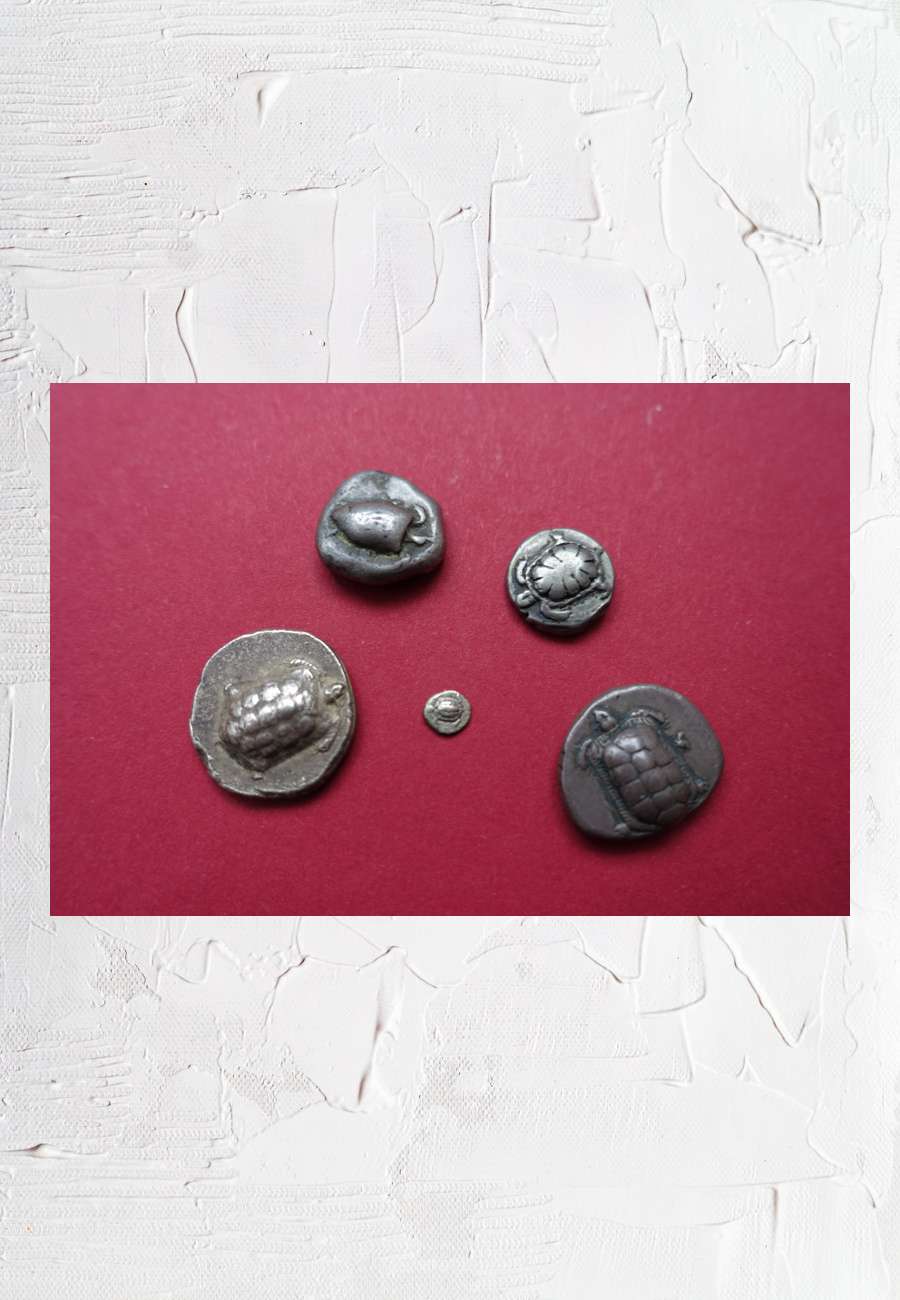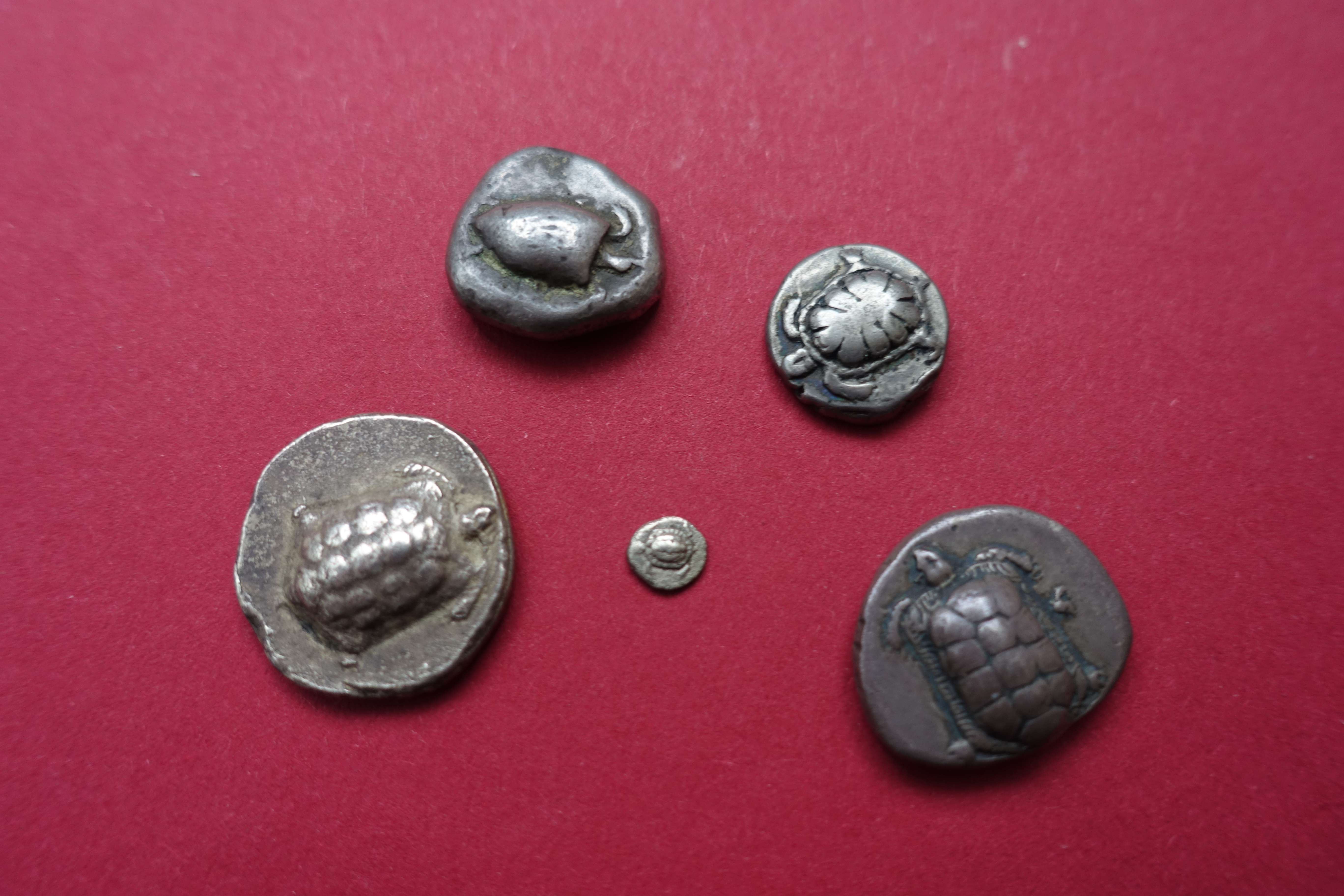The coin embossing is an invention of the ancient Greeks, here coins of Greek city -states, silver, beaten by hand, diameter of 0.6 - 2.5 cm. Ancient coins have no numbers or values. Differentiation characteristics are only material, size and motifs.
To the top left: State of the island of Aegina, due to the geographical location, an important manual place (the silver was introduced from Spain), 530 - 500 BC. The legendary piece of money is one of the oldest and most famous coins. The turtle is a symbol for Aphrodite Urania, the top goddess of the island. It was also a "foam -born" patron of the seafarers.
Above right: Drachme from Aegina, 404 before our era. When Aegina was conquered by the old enemy Athens, the island lost its supremacy in Seehandel. This resulted in the coin image of the sea turtle at the winner's pressure had to be replaced by a tortoise.
Bottom left: a replica of the stator.
Bottom right: State from Aegina, 456 - 431 BC. BC, very good condition.
In the middle: Hemibol (Hemi = half Obol) from Lesbos, 400 -375 BC. BC, very rare and probably the smallest, so well -shaped coin (diameter 6 mm). Some of the covers were purchased at auctions from private bank Hauck & Aufhäuser. In the saying from Aegina "Courage and wisdom do not arise against turtles", the turtle motif symbolically stands for the vice of greed for money (derived from the valuable coins). The language use "pay his Obolus" is also due to Greek coins. The "toads" colloquial name for money is also due to us. In addition, there are still gold-colored turtle cuff buttons in the collection, and the coins described clearly model in the design.
[hint: this is an automatic translation from German]
| Category: Coins
| Material: Metall
| Country of origin:
Attica, Greece
|
Similar pieces
 .
.
|
A visually similar exhibit of the collection is#5898 - Toys |
![#6374 - Textiles [Zana Florou-Mela]](https://luratimediaprod.s3.amazonaws.com/CACHE/images/images/artefacts_images/DSC06285_2uXHiaD_5dKosqi_gAhXH1M/675dc577647a90789194d1713db390be.JPG) .
.
|
The object of the collection with nearest place of origin in Attica, Greece is #6374 - Textiles [Zana Florou-Mela] . |

